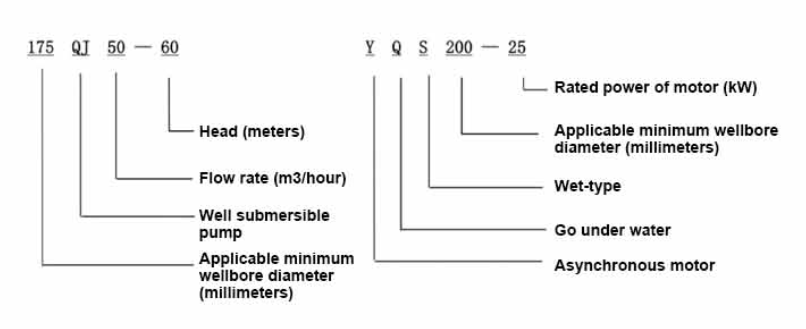Aug . 14, 2024 10:16 Back to list
Innovative Solutions for Efficient Variable Speed Deep Well Pumping Systems in Modern Agriculture
Variable Speed Deep Well Pumps Revolutionizing Water Extraction
In the modern landscape of water extraction and management, variable speed deep well pumps stand out as a groundbreaking solution. They offer significant advantages over traditional constant-speed pumps, especially in terms of efficiency, adaptability, and operational cost. This article explores the fundamental aspects of these pumps, their applications, benefits, and the technology behind them.
Understanding Variable Speed Deep Well Pumps
A variable speed deep well pump is designed to adjust its operational speed based on the demand for water and the specific conditions of the well. Unlike conventional pumps that operate at a fixed speed, variable speed pumps utilize advanced drive technology—often employing variable frequency drives (VFDs)—to alter the pump's speed and flow rate dynamically. This adaptability allows for optimal performance under various conditions, leading to energy savings and improved longevity.
Applications
Variable speed deep well pumps find utility in a vast array of applications, ranging from agricultural irrigation and municipal water supply to industrial processes and geothermal heating. In agriculture, for example, these pumps can be adjusted based on real-time moisture levels in the soil, ensuring that crops receive the exact amount of water needed for optimal growth. In municipal systems, they can respond to fluctuating water demands throughout the day, from peak use during morning hours to lull periods overnight.
Another significant application is in the realm of geothermal heating and cooling, where these pumps efficiently circulate water through geothermal systems, adjusting based on temperature fluctuations. This versatility marks variable speed pumps as an indispensable tool in water resource management.
Benefits
The shift towards variable speed deep well pumps brings numerous benefits
.variable speed deep well pump

1. Energy Efficiency One of the most notable advantages is energy savings. By adjusting the pump speed to match the actual demand, these systems minimize energy consumption—potentially cutting operational costs by significant margins.
2. Reduced Wear and Tear Variable speed operation reduces the mechanical stress on the pump components. By slowly ramping up and down, the risk of surges and cavitation is minimized, extending the life of the pump.
3. Improved System Performance These pumps enhance system resilience against fluctuations in demand. They can deliver consistent pressure and flow rates even in varying conditions, leading to improved service reliability.
4. Advanced Control and Monitoring Modern variable speed pumps often come equipped with smart technology, allowing for remote monitoring and control. This capability enables operators to track performance metrics, diagnose issues swiftly, and manage operations more effectively.
Technology Behind Variable Speed Pumps
The technology behind variable speed pumps primarily revolves around electronic controls. At the core is the variable frequency drive, which adjusts the electrical frequency supplied to the motor. By altering the frequency, the speed of the motor—and thus the pump—is modified, allowing for precise control over flow rates.
Many of these systems also incorporate sensors and automated feedback loops that continuously monitor conditions such as pressure, flow rate, and temperature. This level of integration ensures that the pump operates efficiently and can adapt to changing conditions in real-time.
Conclusion
In summary, variable speed deep well pumps represent a significant advancement in water extraction technology. They offer improved energy efficiency, reduced wear on equipment, and enhanced adaptability to fluctuating demands. As communities and industries seek sustainable solutions for water management, the role of variable speed pumps will undoubtedly grow, paving the way for innovative applications that meet the needs of a changing world. By embracing this technology, we can better manage one of our most precious resources water.
-
Submersible Water Pump: The Efficient 'Power Pioneer' of the Underwater World
NewsJul.01,2025
-
Submersible Pond Pump: The Hidden Guardian of Water Landscape Ecology
NewsJul.01,2025
-
Stainless Well Pump: A Reliable and Durable Pumping Main Force
NewsJul.01,2025
-
Stainless Steel Submersible Pump: An Efficient and Versatile Tool for Underwater Operations
NewsJul.01,2025
-
Deep Well Submersible Pump: An Efficient 'Sucker' of Groundwater Sources
NewsJul.01,2025
-
Deep Water Well Pump: An Efficient 'Sucker' of Groundwater Sources
NewsJul.01,2025
-
 Submersible Water Pump: The Efficient 'Power Pioneer' of the Underwater WorldIn the field of hydraulic equipment, the Submersible Water Pump has become the core equipment for underwater operations and water resource transportation due to its unique design and excellent performance.Detail
Submersible Water Pump: The Efficient 'Power Pioneer' of the Underwater WorldIn the field of hydraulic equipment, the Submersible Water Pump has become the core equipment for underwater operations and water resource transportation due to its unique design and excellent performance.Detail -
 Submersible Pond Pump: The Hidden Guardian of Water Landscape EcologyIn courtyard landscapes, ecological ponds, and even small-scale water conservancy projects, there is a silent yet indispensable equipment - the Submersible Pond Pump.Detail
Submersible Pond Pump: The Hidden Guardian of Water Landscape EcologyIn courtyard landscapes, ecological ponds, and even small-scale water conservancy projects, there is a silent yet indispensable equipment - the Submersible Pond Pump.Detail -
 Stainless Well Pump: A Reliable and Durable Pumping Main ForceIn the field of water resource transportation, Stainless Well Pump has become the core equipment for various pumping scenarios with its excellent performance and reliable quality.Detail
Stainless Well Pump: A Reliable and Durable Pumping Main ForceIn the field of water resource transportation, Stainless Well Pump has become the core equipment for various pumping scenarios with its excellent performance and reliable quality.Detail
